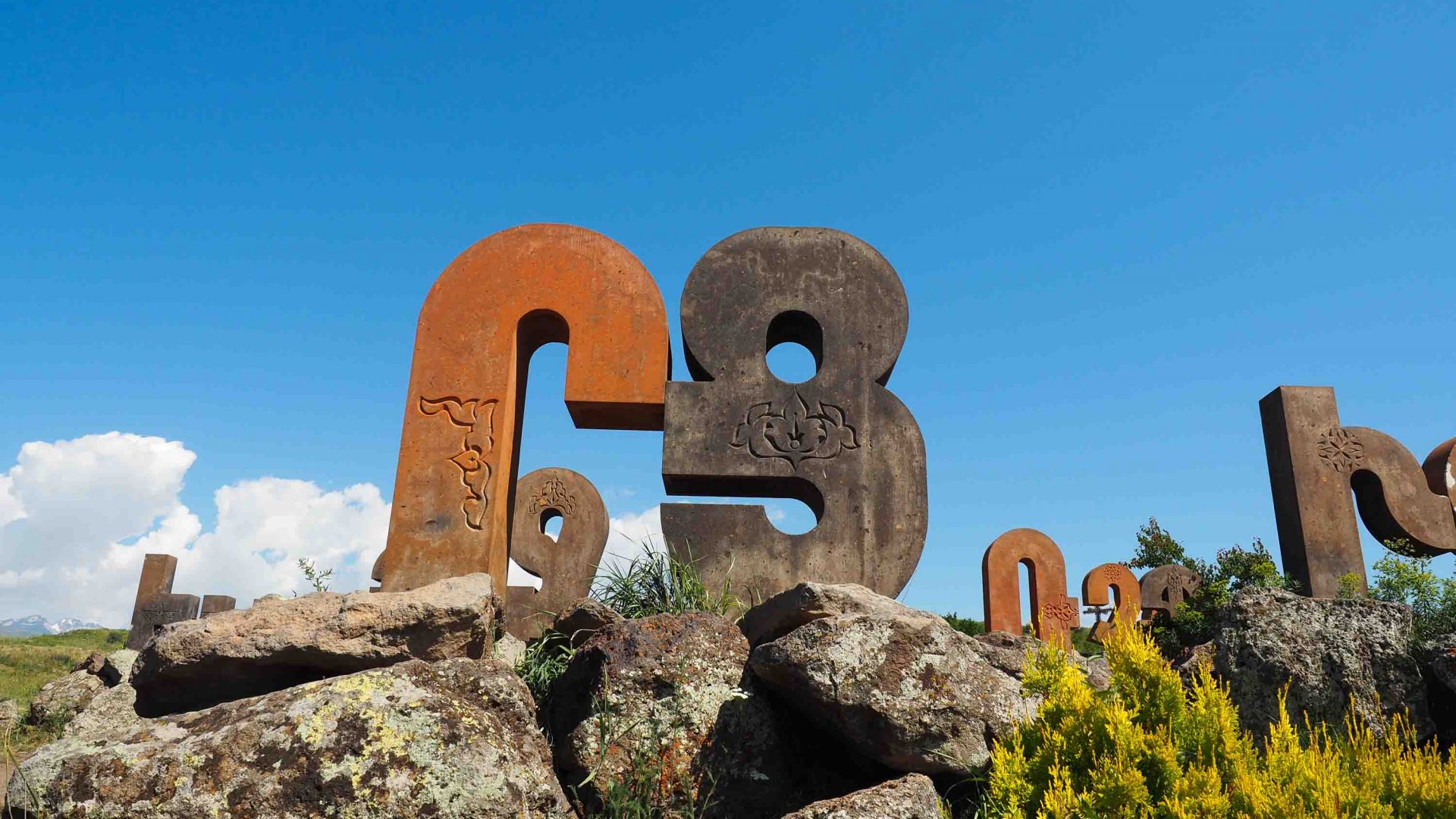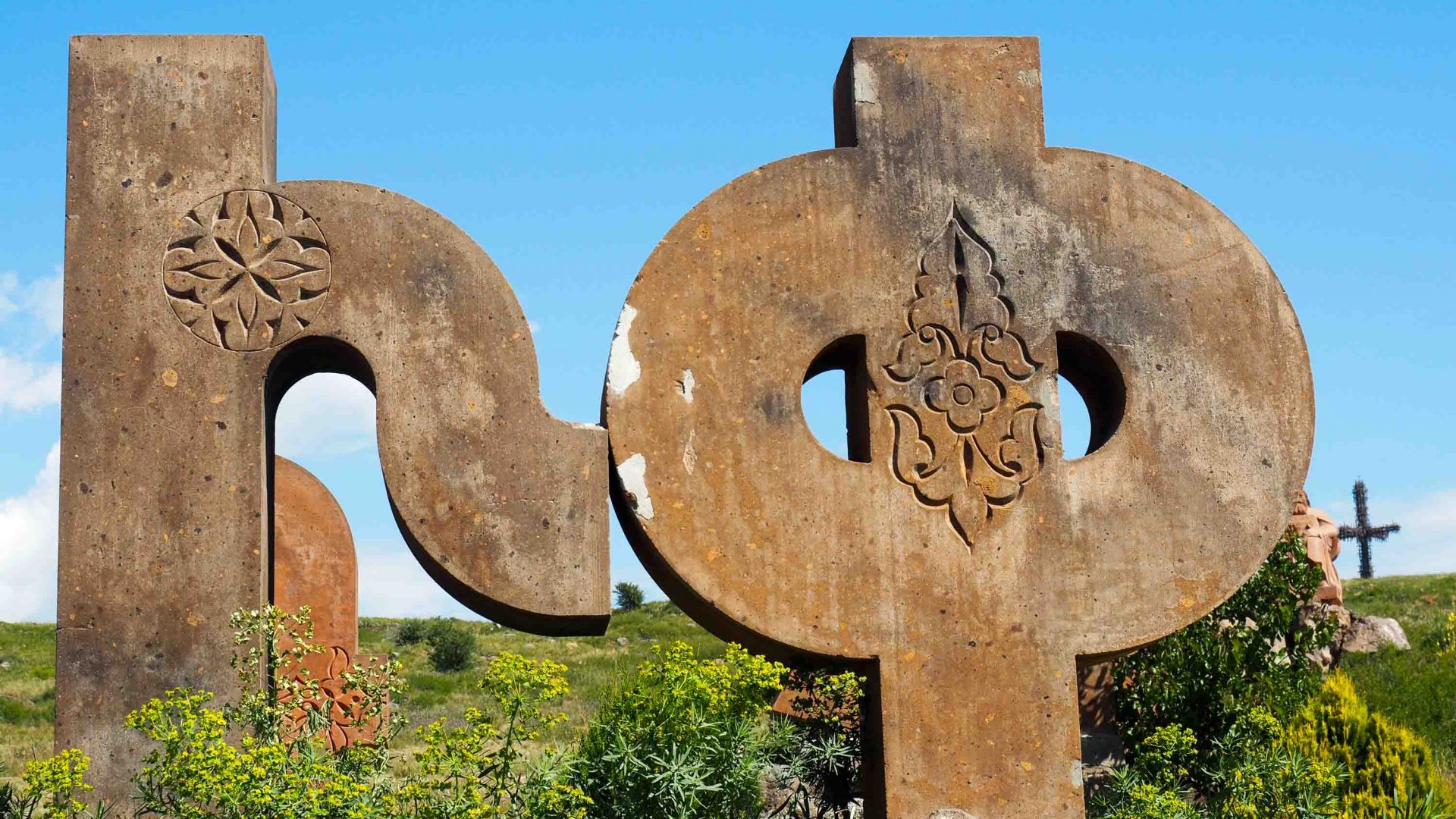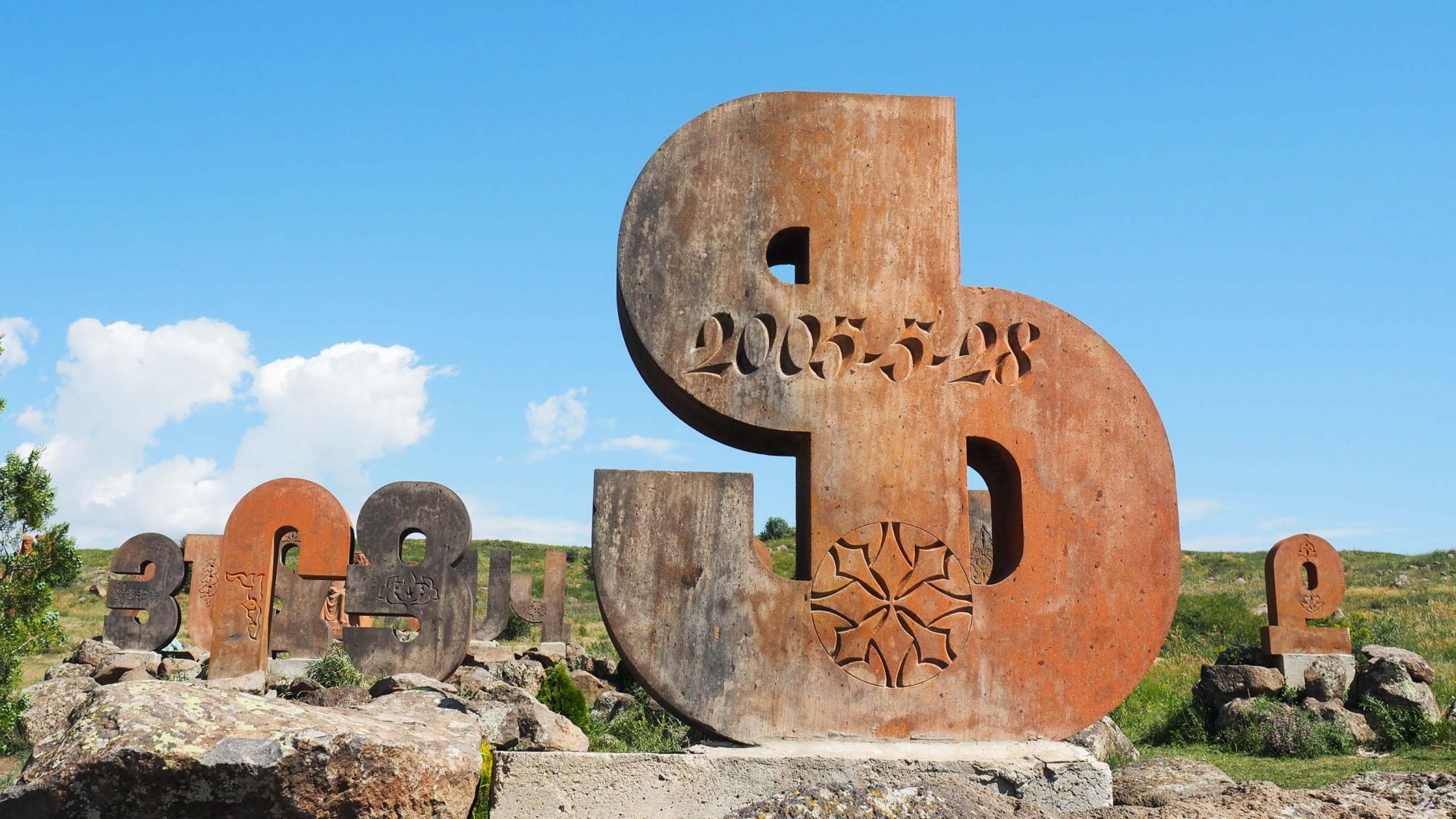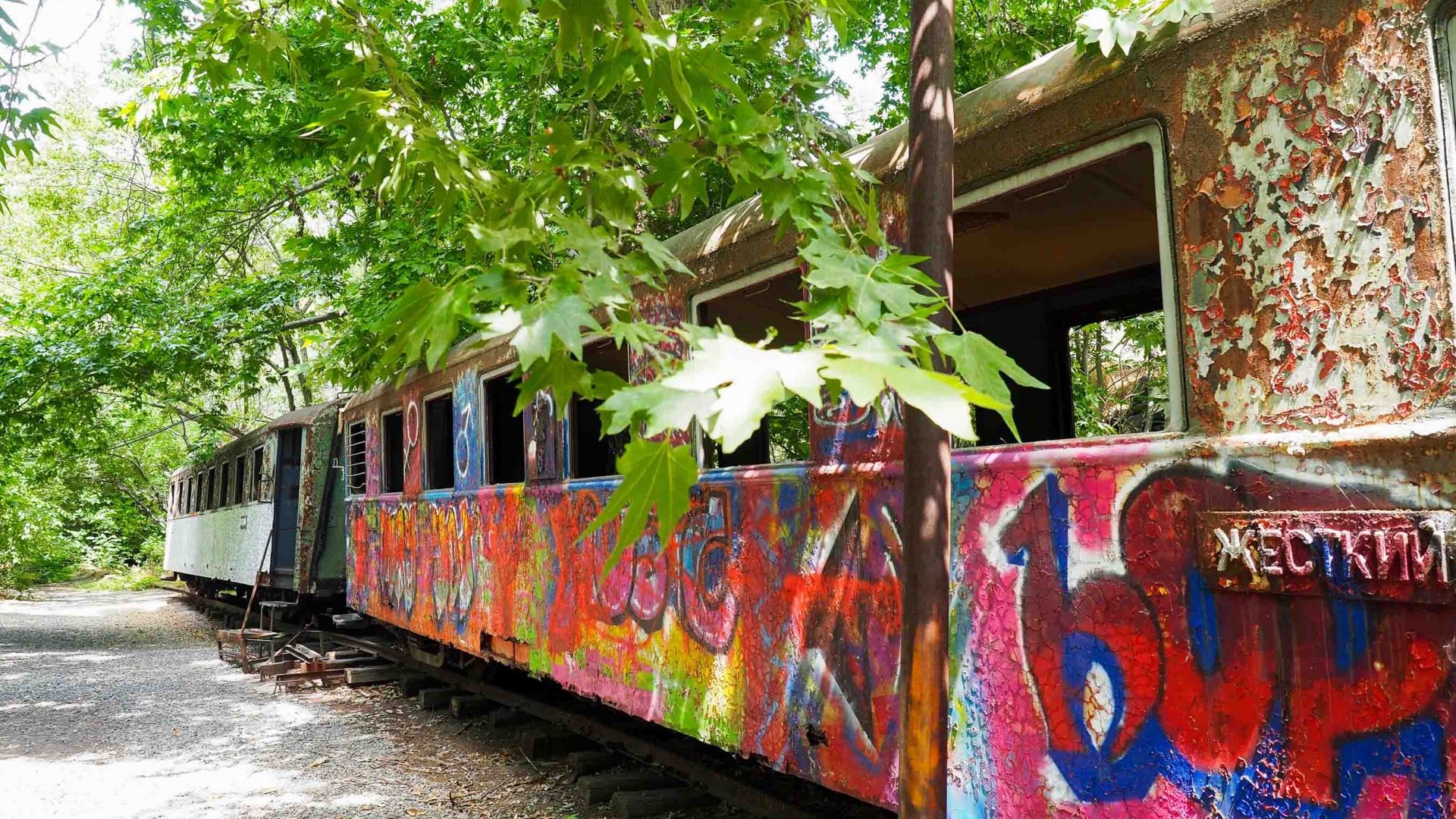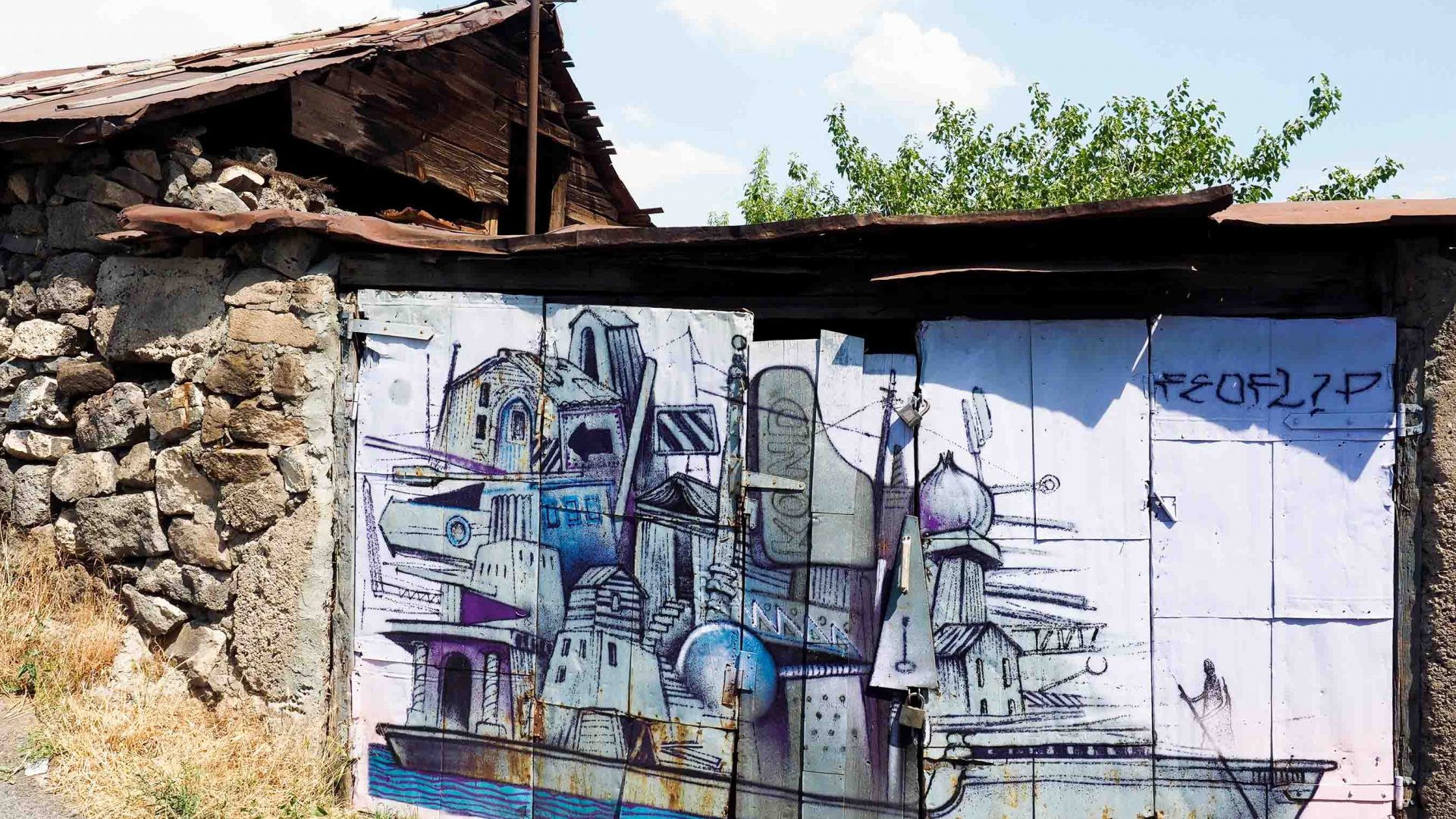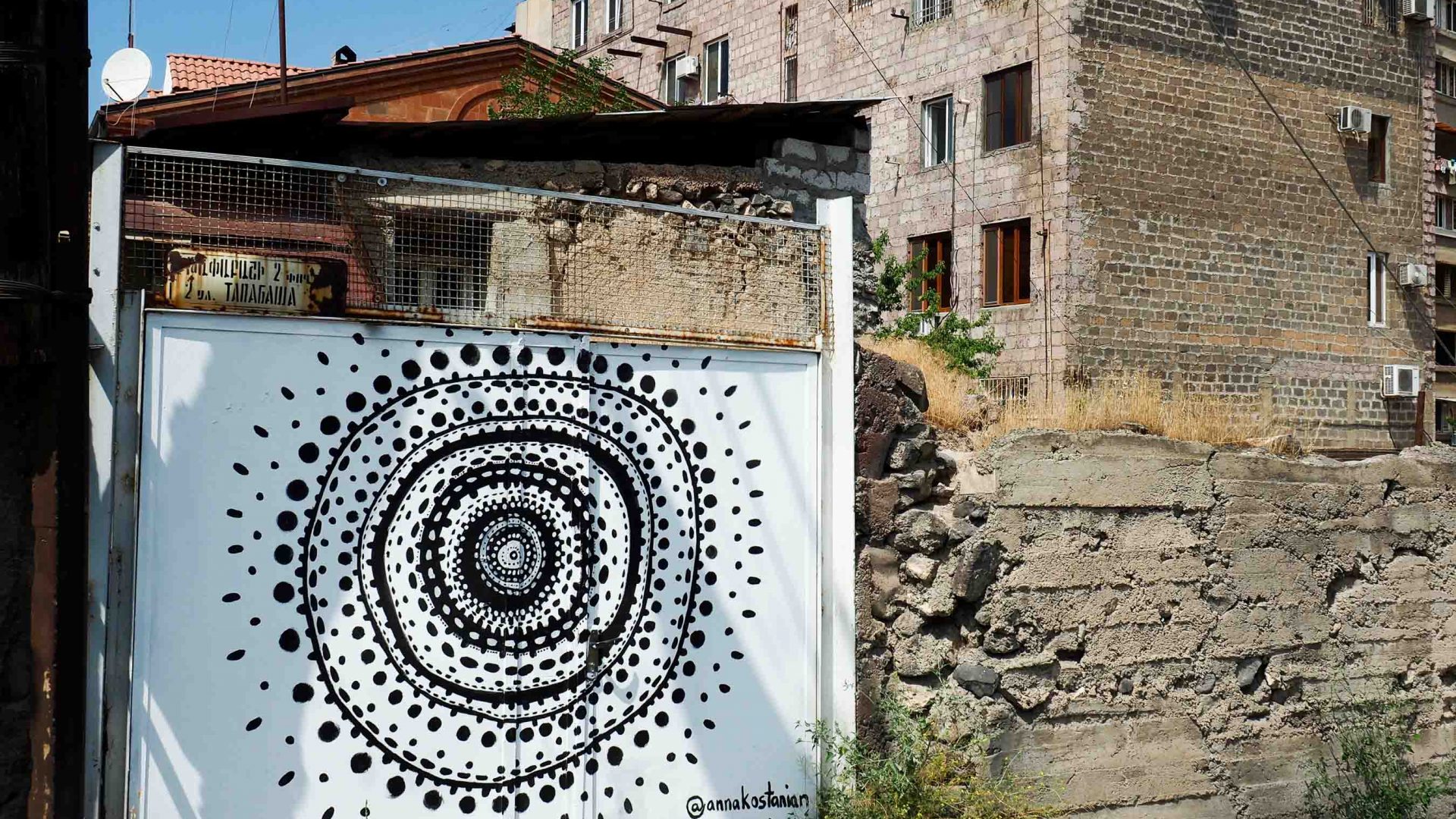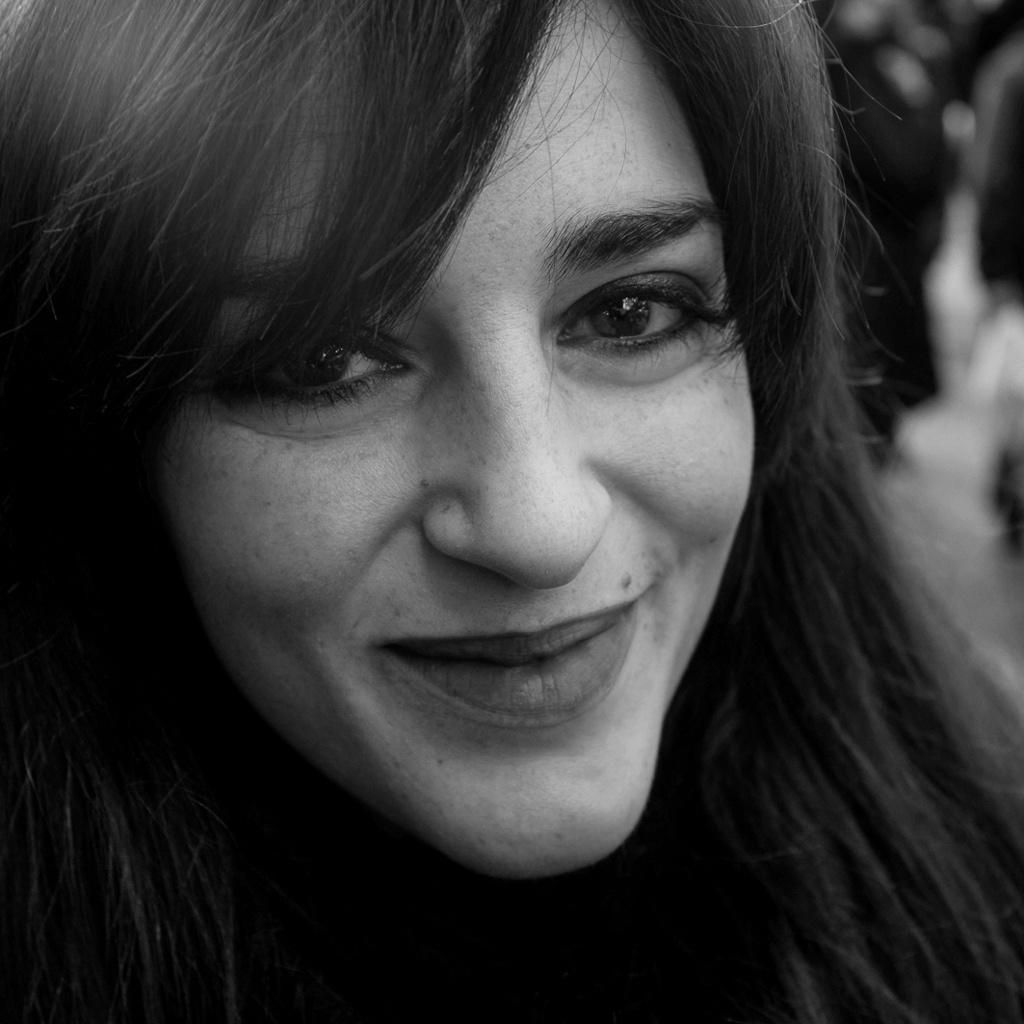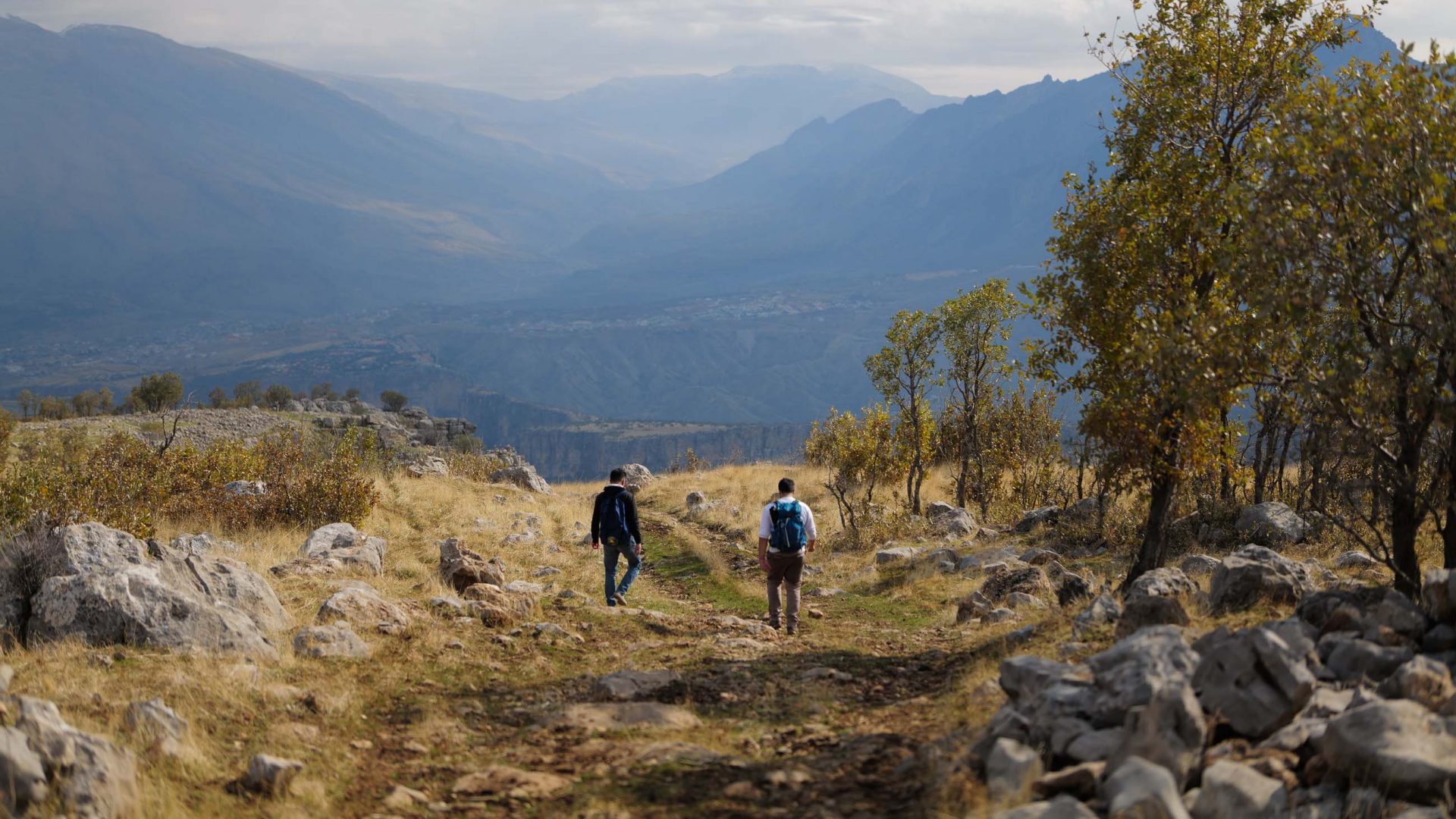The Armenian alphabet was invented some 1,616 years ago, but it’s no ordinary collection of letters. Kerry van der Jagt takes a walk through Armenia’s ‘alphabet forest’, and finds a window into a rich, diverse and proudly literary culture.
There are two surprising things about the Armenian alphabet—aside from the fact it is one of the world’s oldest.
The first is that it acts as a nifty numbering system used for complex calculations. The second is that its 39 letters have been carved into giant statues and planted in a field of wildflowers.
The sun is out and the weather is warm as I weave my way between the rose-colored symbols, each hued from volcanic rock (tuff) and etched with flowers, scrolls and knots. While some gather in grammatical groups, others stand alone, their curly-whorls silhouetted against a brilliant blue sky. In the distance, the snow-capped slopes of Mount Aragats spreads like meringue across the Armenian Highlands.
Constructed in 2005 to commemorate the alphabet’s 1,600th birthday, the Armenian Alphabet Monument is situated near the final resting place of Mesrop Mashtots, the Armenian linguist who developed the language in 405 AD.
It’s a small country, this Armenia, tucked like a piece of broken jigsaw puzzle between Georgia, Azerbaijan, Turkey and Iran. Ruled by Romans, conquered by Byzantines, Persians and Mongols, and colonized by the Ottoman Turks in the 16th century, the Armenia of today is what remains of a once-larger, ancient empire.
Modern times brought more hardship; from the Armenian Genocide, which saw the systemic mass murder of 1.5 million Armenians by the Ottoman Empire during World War One to the often-brutal conditions under Soviet rule from 1920 until independence in 1991. Conflict with Azerbaijan over the disputed region of Nagorno-Karabakh continues to cause grief.
“Yet, through it all we’ve managed to preserve our cultural identity,” says Karine. “The invention of our own unique alphabet enabled people to learn and use the language, which resulted in the birth of Armenian literature.”
RELATED: Want to get to know Armenia? Ride the ballistic bus
Having studied for four years at the American University of Armenia, taking classes under renowned archaeologist and historian Professor Gregory Areshian, there’s not much Karine doesn’t know.
We’d started in the Armenian capital of Yerevan, driving northwest for a day trip to the Aragatsotn province, weaving through a crumpled landscape stripped of color, but strewn with delights. There’s a medieval monastery perched above a gorge, and a hillside fortress clinging to the slopes of Mount Aragats. Women make flatbread at roadside stalls and mysterious Dragon Stones soar against the sky.
We arrive at the sprawling Alphabet Monument to find it empty of people, as simple and elegant as the Armenian architect J. Torosyan intended. Under Karine’s guidance, the individual letters begin to form sentences, stories and poems, a love-letter to the country, where each verse offers an insight into Armenian identity.
Alone, I wander among the giant stones, the flit of butterflies the only movement in this gallery of secrets. As the sun warms my face I rest against the first letter of the alphabet, a delicate U-shaped character that stands for Astvats (God).
I have another date with the clever inventor at Yerevan’s Mesrop Mashtots Institute of Ancient Manuscripts, where his statue greets visitors with open arms. Known locally as the Matenadaran, the fortress is home to some of the most rare and ancient texts in the world.
A private “Alternative Yerevan” tour with Vako from Yerevan Free Walking Tours is an opportunity to visit parts of the city rarely seen by tourists. Entering the subterranean tunnel, with its moody lighting and street art, is like finding a portal to another land.
RELATED: How 43 presidents heads ended up abandoned on Virginia farmland
We emerge into sunshine, where an overgrown path burrows through a froth of fern-green foliage. Before us lies the abandoned Children’s Railway Station, all fairy-tale turrets and peeling pink paint. Train carriages, every square centimeter covered in graffiti, sit like works of art on rusty tracks. Vines and creepers sprout between cracks. Come May, the Urvakan (meaning ‘ghost’) art and music festival will pack this subversive space—but today there’s not a soul in sight.
Our walk takes us through Kond, one of the oldest districts in Yerevan, a city within a city of narrow alleys, stone houses and a flush of contemporary murals. “The people in Kond are the friendliest in all of Yerevan,” says Vako, as a resident invites us to sample a sweet apricot, which has been drying in the sun. Through Vako’s eyes, 300years of history is peeled back; from an 18th-century mosque, which became a refuge to Armenian families during the Armenian Genocide to the home (now museum) of Sergei Parajanov, the renowned Armenian film-maker who was repeatedly imprisoned by Soviet authorities for his cult masterpieces.
